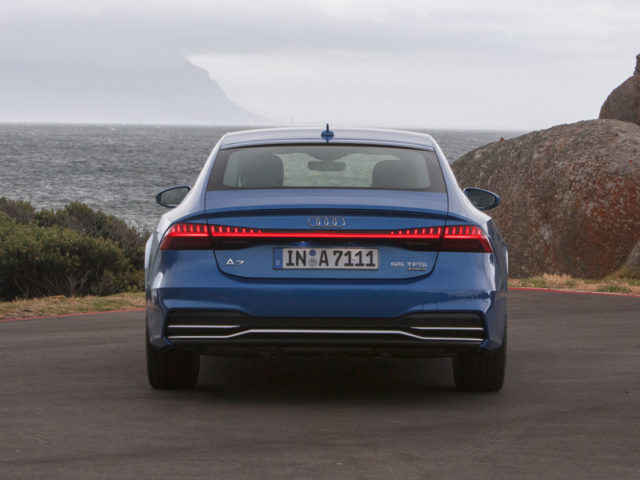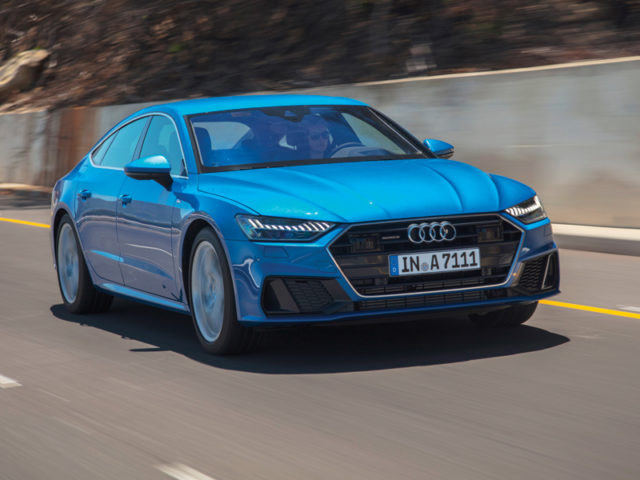First Drive: Audi A7 Sportback 50 TDI quattro
Audi’s sector-bridging coupé isn’t just a style statement, says Alex Grant.
SECTOR Executive PRICE €66,000-€71,000 FUEL 5.5-5.8l/100km CO2 142-150g/km
Diversity is big business for Audi. Since 2001, it’s grown its model range from 17 variants to 53, in turn doubling its global sales volumes from 991,444 to 1,878,100 last year, across 100 countries across the world. There’s a model for every need, and some – like the A7 Sportback – cater for several at once.
It’s a car that straddles multiple segments; coupé styling without the cramped cabin and two-door access, estate flexibility without the visual bulk, saloon prestige without the compromised load area. Roughly half of A7s went to fleets last time, which is a sizeable share considering even the efficiency-tuned Ultra version had a six-cylinder engine. For a long list of reasons, the newcomer might be even more attractive.
Foundations first; it’s slightly bigger than the old car, and around 100kg heavier spec-for-spec, but that’s reflected by a noticeable increase in rear passenger space. The silhouette and its frameless windows have barely changed, and neither has the sizeable boot, accessed through a practical hatchback and extended over flat-folding rear seats. The all-LED lighting, now wrapped around the rear end in a single bar like Audi saloons and coupés of the early 1990s, certainly gives it a high-tech style, but, it’s an evolution rather than a revolution.
From launch, the A7 gets a pair of six-cylinder engines; a 340hp petrol and 285hp diesel, which is likely to be the bigger seller in Europe. Both can coast at motorway speeds with the engine decoupled and idling – it pulses the throttle pedal to advise when to lift off – and feature a 48-volt ‘mild hybrid’ system enabling the car to cover very short distances without using any fuel at all. Four-cylinder options will follow – a first for the A7 – and two-wheel drive is likely to be on the cards too.
In the meantime, 5.5l/100km claimed economy is impressive for a car like this. Particularly as the diesel doesn’t get the same intelligent part-time Quattro system as the petrol, and comes paired with a seven-speed Tiptronic automatic gearbox, instead of the TFSI’s S tronic double-clutch transmission. It’s quiet at speed, offers a good spread of pulling power and feels effortless enough to mask the 5.3-second sprint to 100km/h. The A7 is a luxurious and incredibly easy car for long-distance driving.
Or, at least, it is in the right spec. Equipment levels are lavish regardless of trim level, with premium lighting and an all-digital dashboard with most functions moved to a pair of touchscreens, giving haptic feedback so realistic you’d swear you were pressing physical buttons. However, S line traditionally has a high take-up, and its lower, firmer suspension and 20-inch wheels result in a really unsettled ride which doesn’t suit the A7. Suspension settings are hidden in the Drive Select menus; be sure to try both the steel-sprung and air suspension before ordering, as this isn’t enough of a driver’s car to overlook the discomfort of the Sport setup. And, unlike the A3, there’s no option to fit the standard springs to the S line.
Otherwise, it’s a hard car to pick faults with, offering all the presence, luxury and flexibility of its predecessor, but in a more chiselled, technology-rich package. A niche well worth filling.
What we think
The A7 ticks a lot of boxes for the high-mileage executive driver – but the optional air suspension is a must-have for S line versions.




